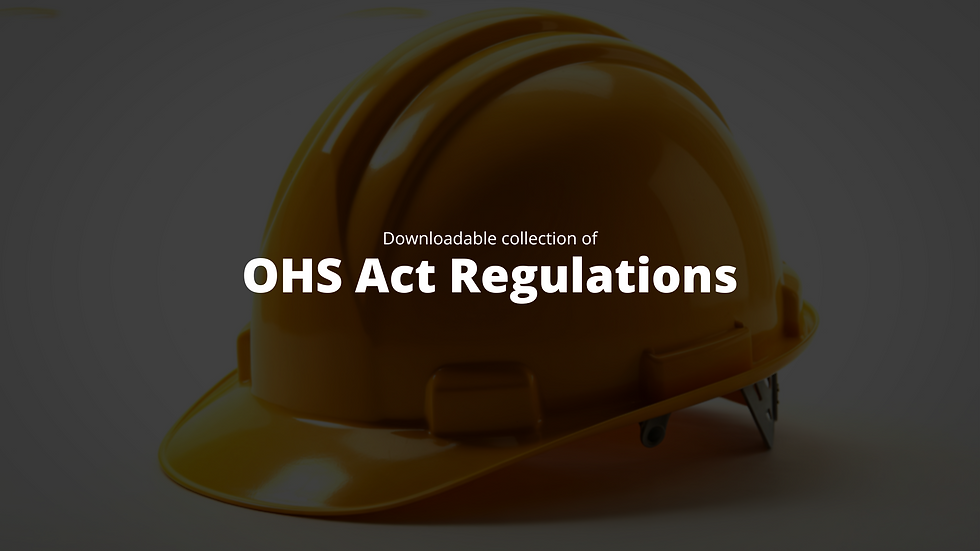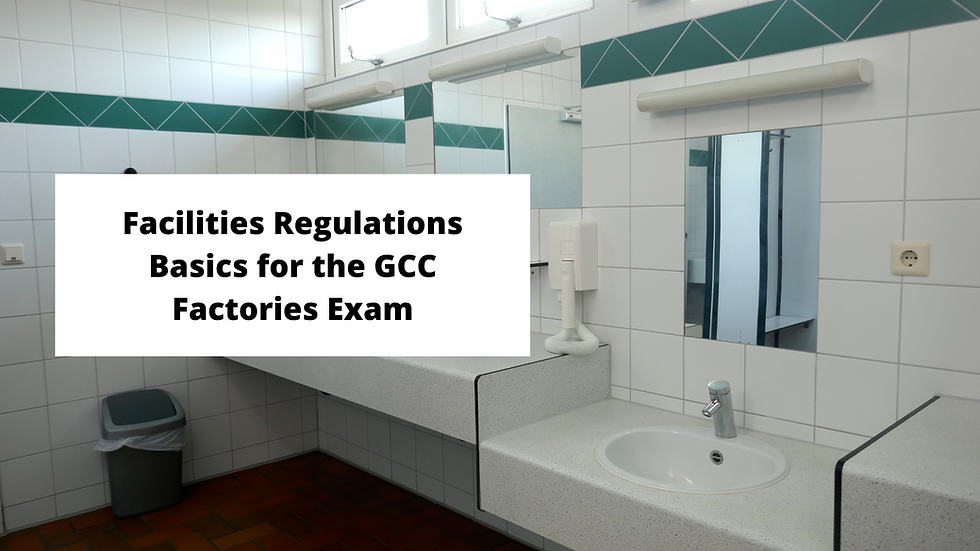General Machinery Regulations (GMR) compliance basics for South African Industrialists
- Nkululeko Thusini

- Feb 26, 2020
- 4 min read
Updated: Mar 20, 2024
Industrialisation is a hot topic in South Africa.
South Africa continues to struggle with addressing the socio-economic challenges of the country. Poverty, unemployment, and inequality are perhaps the three most significant contributors to the countries socio-economic challenges.
In all honesty, there is no silver bullet to addressing this matter. Many scholars and professionals have proposed different solutions that range from dealing with policy issues to education and creating job opportunities.
During the recent Ubuntu Awards 2020, President Cyril Ramaphosa said that "we want to reignite industrialisation, boost intra-African trade, and benefit from the largest common market in the world." [1]
According to the world bank, South Africa is the second-largest economy in Africa after Nigeria, based on its 2018 Gross Domestic Product (GDP) figures [2].

Unfortunately, the contribution of the South African manufacturing sector to the GDP has declined from 19.5% in 1995 to 11.7% in 2018 [3]. Stimulating industrialisation (or manufacturing) in South Africa then becomes an essential topic of discussion.

OHS Act at the factory
South Africa needs to stimulate economic growth to address some of its socio-economic challenges. One way of doing this is by building more factories that create jobs and increase manufacturing's contribution to the GDP.
There are many considerations when establishing a factory, which may range from funding, marketing to general legal compliance.
When constructing a factory in South Africa, the owner/employer is required to comply with the legislation of the country. One such law that is particularly important is the Occupational Health and Safety Act (OHS Act).
Factories make use of various machinery, which may affect the health and safety of employees. According to Section 43 of the OHS Act, the Minister may make regulations that are necessary or desirable in the interest of the health and safety of persons in connection with the use of plant or machinery [4].
One such regulation that may be necessary for many factories is the General Machinery Regulations.
Three (3) General Machinery Regulations considerations for factory owners or employers
1. The employer shall designate a competent person in a full-time capacity.
The employer is required to ensure that a competent person supervises the use and operation of machinery by employing a designated person (GMR2(1)) in a full-time capacity [5].
The competency of the GMR2(1) varies depending on the size of the factory.
2. Factories that require to appoint a GMR2(1)
All factories that make use of machinery are required to have a designated person (GMR2(1)).
No employer or user of machinery needs to designate a person in respect of the following machinery that is inspected and maintained by a duly qualified person:
any elevator, goods elevator, escalator or electrical installation in any shop or office
any domestic premises, any domestic appliance used as such
any machinery used in connection with building work
any vehicle or earthmoving plant
any refrigeration, cooling, air-conditioning or freezing plant
3. Competency of the designated person.
The four competency levels described by the General Machinery Regulations:
Level 1 - Candidates who have served an apprenticeship in an engineering trade, or has had at least five years' practical experience in operation and maintenance of machinery. The candidate needs to have post qualification experience of not less than one year's experience in operation and maintenance appropriate to the class. These candidates may supervise machinery that has generated power of less than 1200 kW (in the case of mechanical) or less than 3000 kVA where machinery is used solely for the distribution of electricity (in the case of electrical).
Level 2 - Candidates must have a mechanical or electrotechnical (heavy current) engineering diploma. The candidates must have post qualification experience of not less than two years' practical experience in operation and maintenance appropriate to the class of machinery he is required to supervise. These candidates may supervise machinery that generates power between 1200 kW and 3000 kW (in the case of mechanical) or 3000 kVA to 10000 kVA in the case where machinery is used solely for the distribution of electricity. Level 3 - Candidates must have a bachelor's in mechanical or electrical engineering. The candidates need to have post qualification experience of not less than two years appropriate to the class of machinery he is required to supervise. The candidate needs to have passed the Government Certificate of Competency (GCC) factories OHS Act exam. These candidates may supervise machinery that generates power above 3000 kW (in the case of mechanical) or above 10000 kVA in the case where machinery is used solely for the distribution of electricity.
Level 4 - Candidates must be a certificated engineer. These candidates may supervise machinery that generates power above 3000 kW (in the case of mechanical) or above 10000 kVA in the case where machinery is used solely for the distribution of electricity.
Conclusion
Factories are one of the essential factors that may assist in creating jobs and thereby addressing the socio-economic challenges of South Africa. It is necessary to have factories that comply with the legislation and regulations of the country. Protecting the health and safety of employees involved with the operation of machinery at the factory is also necessary.
The key considerations that factory owners/employers need to consider when seeking to comply with the General Machinery Regulations relate to:
Designating a competent person to supervise machinery
Designate a competent person where necessary
Ensure the designated person has the correct level of competency relative to the size of the factory
Want to learn more about the requirements of the General Machinery Regulations and the designation of the competent person? Visit https://www.palucraft-gccstudy.com/gcc-factories-blog
References
[1] https://www.iol.co.za/news/south-africa/western-cape/president-ramaphosa-seeks-to-boost-intra-african-trade-industrialisation-42808494, 25 February 2020
[2] The World Bank, https://data.worldbank.org/indicator/NY.GDP.MKTP.CD?contextual=region&locations=ZA, 25 February 2020
[3] The World Bank, https://data.worldbank.org/indicator/NV.IND.MANF.ZS?contextual=default&end=2018&locations=ZA&name_desc=false&start=1960&view=chart, 25 February 2020
[4] Occupational Health and Safety Act No. 85 of 1993 as amended by the Occupational Health and Safety Amendment Act No. 181 of 1993
[5] General Machinery Regulations, GN R1521, 5 August 1988




Comments